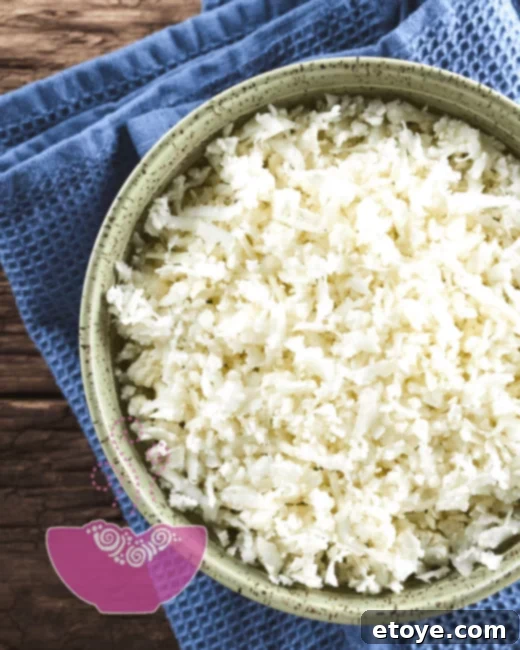Mastering Cauliflower Rice: Your Ultimate Guide to Preparation, Cooking, and Storage
Cauliflower rice has revolutionized healthy eating, offering a fantastic low-carb, gluten-free, and nutrient-rich alternative to traditional grains. Whether you’re navigating dietary restrictions or simply seeking to incorporate more vegetables into your meals, learning how to prepare and cook cauliflower rice is a culinary game-changer. This comprehensive guide will walk you through everything from transforming a raw head of cauliflower into perfectly textured rice, to various cooking methods, and smart storage tips that ensure you always have this versatile ingredient on hand.
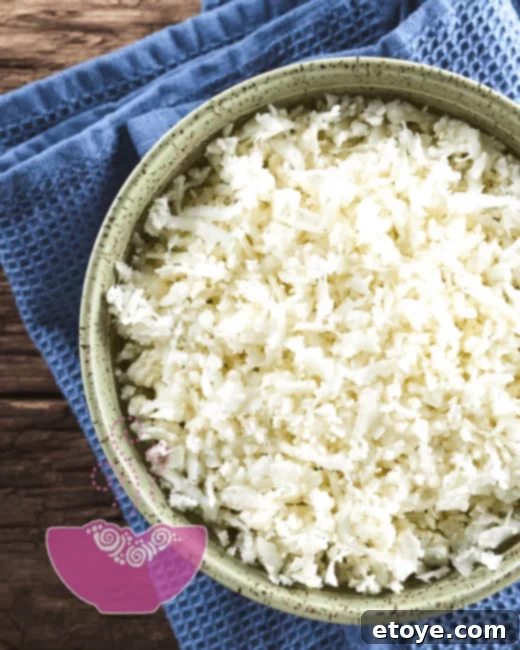
One of the best habits to adopt when making cauliflower rice is to prepare a generous batch. This ensures you’ll have plenty available in your freezer for quick meals throughout the week. Even if you’re a devoted fan of traditional rice and complex carbohydrates, you’ll be surprised at how easily cauliflower rice can satisfy those cravings, allowing you to enjoy multiple guilt-free servings in a variety of dishes.
From Florets to Grains: Preparing Raw Cauliflower for Ricing
The journey to perfect cauliflower rice begins with proper preparation of the raw vegetable. Selecting a fresh, firm head of cauliflower is key. Once you have your cauliflower, follow these simple steps to get it ready for ricing:
- Rinse and Dry Thoroughly: Begin by rinsing a large head of cauliflower under cold running water. Pat it completely dry with a clean kitchen towel or paper towels. Removing excess moisture is crucial, as it prevents the cauliflower from becoming mushy during processing and ensures a better “rice-like” texture.
- Remove Leaves and Core: Strip away all the tough green outer leaves. Then, using a sharp chef’s knife, carefully cut out the dense core. While some people leave a small part of the tender core, for the best rice-like consistency, focusing on the florets is recommended.
- Chop into Manageable Pieces: Once cleaned, the cauliflower needs to be broken down into smaller, more manageable pieces suitable for your chosen ricing method. The size of these pieces will vary depending on whether you’re using a food processor, a box grater, or a knife.
Effortless Ricing Methods for Every Kitchen
Transforming cauliflower florets into rice-like grains is simpler than you might think. Here are three popular and effective methods:
Using a Food Processor for Quick Ricing
The food processor is by far the quickest and most efficient method for making cauliflower rice, especially when preparing large quantities. Its speed makes it ideal for batch cooking.
- Preparation: Roughly chop the cleaned cauliflower into small florets, ensuring they are uniform enough to fit comfortably in your food processor’s bowl.
- Processing in Batches: To avoid overcrowding and achieve an even texture, work in batches. Fill the food processor bowl no more than two-thirds full.
- Pulsing Technique: Use the pulse setting on your food processor. Pulse in short bursts, typically 5-10 seconds at a time, checking the consistency frequently. The goal is to create pieces that resemble grains of rice – small, granular, and uniform.
- Avoid Over-Processing: This is a critical step! Over-processing will turn your cauliflower into a mushy paste or fine “cauliflour” powder, which is not what we’re aiming for. Stop as soon as the desired rice-like texture is achieved. If you find yourself with too fine a texture, perhaps a laugh shared over some baked cauliflower fries might lift your spirits!
- Blender Alternative: If you don’t have a food processor, a high-speed blender can also work. Add cauliflower florets to the blender and use the tamper to push them down towards the blades, pulsing until finely chopped. Again, be careful not to over-blend.
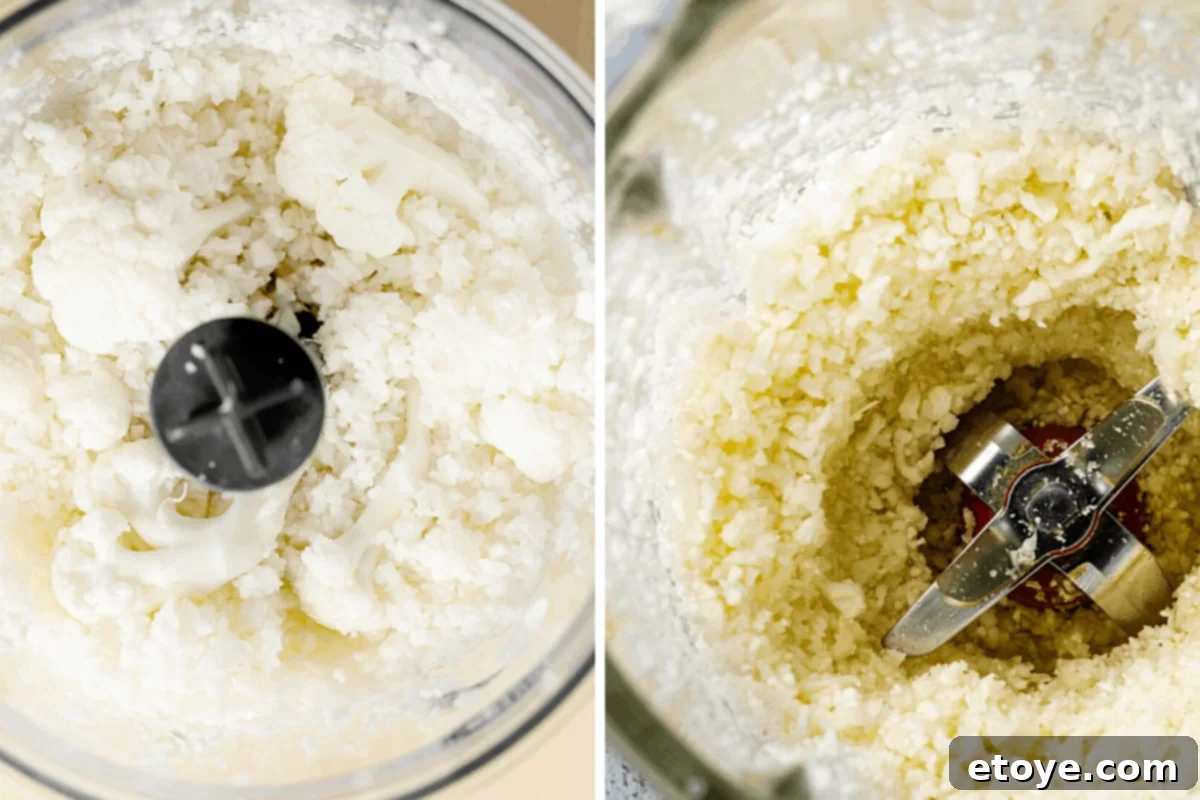
Grating Cauliflower with a Box Grater
For those who prefer a more manual approach or don’t have a food processor, a box grater is an excellent tool. This method gives you precise control over the grain size.
- Sectioning: Cut the cauliflower into large, sturdy sections that are easy to hold and maneuver over the grater.
- Grating Strategy: Use the medium-sized holes on your box grater. Gently grate the cauliflower sections, applying even pressure.
- Check Consistency: Start by grating a small amount and check the size of the grains. Adjust your technique or the size of the holes if needed to achieve your preferred rice-like texture before grating the entire head. This method often produces a slightly coarser grain, which can be delightful in certain dishes.
Mincing Cauliflower by Hand with a Knife
The traditional method of using a chef’s knife offers the most control and is perfect for those who enjoy the meditative process of meal preparation. It also helps refine your knife skills!
- Stem Removal: For this method, it’s generally best to discard most of the tough stem, focusing primarily on the florets and the more tender parts of the core.
- Fine Mincing: Using your best chef’s knife, meticulously mince the cauliflower. Start by finely chopping the florets, then gather them and continue to chop and mince until they reach a uniform, rice-like consistency. This method requires patience but yields beautiful results.


How to Cook Cauliflower Rice: 3 Versatile Methods
Once you’ve transformed your cauliflower into rice, the cooking possibilities are endless. Each method brings out a different texture and flavor profile, making cauliflower rice incredibly adaptable to various culinary creations.
Quick and Easy: Steaming in the Microwave
The microwave is your best friend for a super quick and convenient single serving of cauliflower rice. It’s ideal for a healthy side dish or a speedy lunch.
- Preparation: Place one serving (approximately 1 to 1.5 cups) of cauliflower rice into a microwave-safe bowl.
- Cover and Cook: Cover the bowl tightly with plastic wrap, leaving a small corner slightly vented, or use a microwave-safe plate to cover it.
- Microwave Time: Microwave on High for about 2-4 minutes, depending on your microwave’s wattage and your desired tenderness. The cauliflower rice should be tender but not mushy.
- Seasoning: Once cooked, carefully remove from the microwave, stir, and season with salt and pepper to taste. You can also add a pat of butter or a drizzle of olive oil for extra flavor. This method results in a softer, steamed texture, great for dishes where moisture is desired.
Stovetop Sauté: Building Flavor and Texture
Cooking cauliflower rice on the stovetop allows you to infuse it with incredible flavor and achieve a slightly firmer, more “fried” texture. This method is perfect if you’re aiming to create mock fried rice or a savory pilaf.
- Heat and Oil: Heat a large skillet or wok over medium-high heat. Add a tablespoon or two of your preferred cooking oil (e.g., olive oil, coconut oil, avocado oil).
- Sautéing: Add the cauliflower rice to the hot pan. Stir-fry constantly for 5-8 minutes, or until the rice is tender-crisp and lightly browned.
- Seasoning and Variations: Season generously with salt and pepper. This is where you can get creative! Add minced garlic, ginger, chopped onions, or a splash of soy sauce (for a fried rice base). For a plain version, simply cook with oil and salt. The key is to keep it moving in the pan to ensure even cooking and prevent sticking.
- Achieving a Dry Texture: For a truly “rice-like” texture, ensure your pan is hot enough and don’t overcrowd it. Cook in batches if necessary, and ensure the cauliflower rice is as dry as possible before it hits the pan.
Oven Roasting: The Most Flavorful Method
Roasting cauliflower rice in the oven brings out its natural sweetness and creates a wonderfully toasted, nutty flavor. This method is often hailed as the most flavorful, producing rice with a delightful bite and deeper character.
- Preheat Oven: Preheat your oven to a robust 400°F (200°C).
- Toss and Spread: In a large bowl, toss the cauliflower rice with a generous drizzle of olive oil (or your preferred oil) and a good pinch of salt and black pepper. Ensure every grain is lightly coated.
- Single Layer Baking: Spread the seasoned cauliflower rice into a single, even layer on a large baking sheet. Do not overcrowd the pan; use two baking sheets if necessary to prevent steaming.
- Roasting Time: Roast for 10 to 18 minutes, or until the cauliflower rice is tender and has achieved a lightly golden-brown color. Toss it halfway through cooking to ensure even browning. The aim is for the “rice” to be dry and slightly crisp, not watery.
- Serving Suggestions: Roasted cauliflower rice makes an excellent base for grain bowls, a hearty side to grilled meats, or a flavorful addition to salads.
Freezing and Defrosting Cauliflower Rice for Convenience
One of the biggest advantages of cauliflower rice is its freezer-friendliness. Preparing a large batch and freezing it saves valuable time on busy weeknights, making healthy eating more accessible. Frozen cauliflower rice is incredibly versatile and ready to be transformed into a myriad of dishes.
- Freezing Raw Cauliflower Rice: After ricing your cauliflower using your preferred method, spread it out on a baking sheet lined with parchment paper in a single layer. Flash freeze for about 30 minutes to an hour until firm. This prevents the grains from clumping together. Once frozen, transfer the cauliflower rice to resealable freezer-safe bags or airtight containers. Remove as much air as possible before sealing. It can be stored in the freezer for up to 3 months.
- Defrosting Made Easy: When you’re ready to use your frozen cauliflower rice, there’s no need to fully thaw it beforehand, especially if you plan to cook it immediately. For quick defrosting, microwave on a low setting for 2-3 minutes until it starts to separate.
- Ideal for “Drier” Dishes: The freezing and defrosting process naturally breaks down the cell walls of the cauliflower, making the florets more tender. This texture is absolutely perfect for recipes like fried “rice,” rice pilafs, or other dishes where a “drier” grain texture is desired, as opposed to moist steamed rice or boiled porridge.
- Bypassing Prep Time: Using frozen cauliflower florets, whether store-bought or homemade, eliminates the need to trim, cut, process, or even pre-cook the cauliflower. This can easily shave 15 minutes or more off your meal preparation and cooking time, making it a fantastic option for busy individuals.
- Crucial Tip: Blotting Dry: This step cannot be overstated for optimal results, particularly when making fried “rice.” Before adding frozen (or even fresh) cauliflower rice to a hot pan for stir-frying, blot it thoroughly dry with a paper towel. Excess moisture will cause the cauliflower to steam rather than stir-fry, resulting in a soggy texture rather than the desired dry, separate grains. This simple act ensures your cauliflower “rice” has that perfect, authentic mouthfeel.
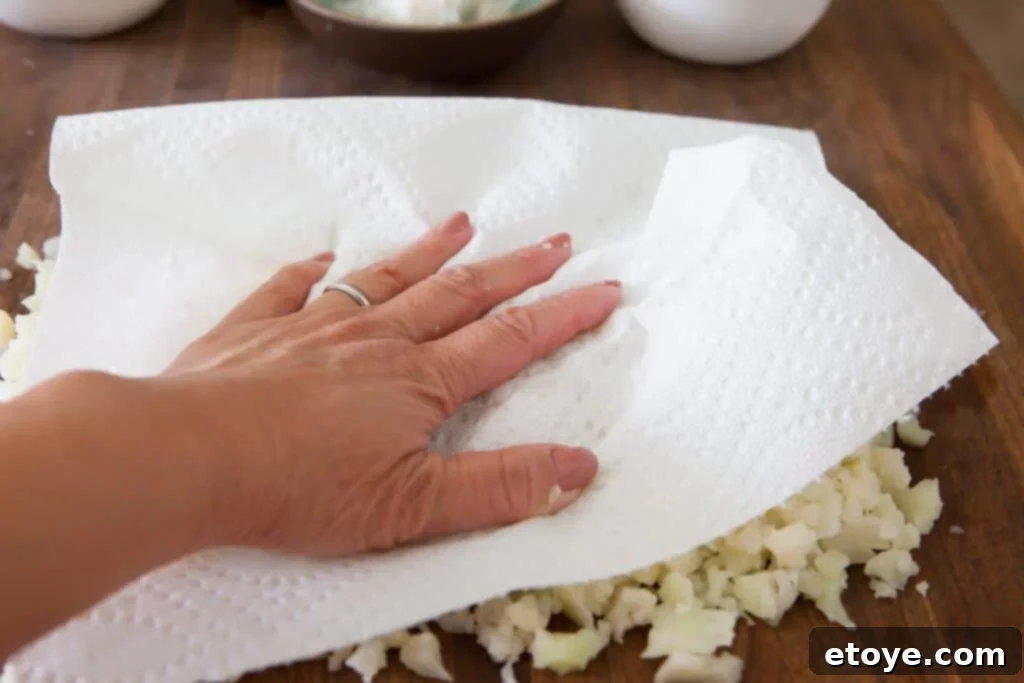
Now that you’ve mastered the fundamentals of preparing, cooking, and storing cauliflower rice, we’d love to hear about your culinary adventures! Share your tips, tricks, and favorite ways to enjoy this incredible versatile vegetable in the comments below.
Unlock More Cauliflower Potential: Delicious Recipes
Cauliflower rice isn’t just a side dish; it’s a fantastic foundation for a myriad of flavorful meals. Explore these enticing recipes that showcase cauliflower’s versatility, from vibrant buddha bowls to savory fried rice dishes.
Nourishing One-Bowl Meals
Use cauliflower rice as the nutrient-dense base for these wholesome and satisfying one-bowl meals:
- Roasted Cauliflower Buddha Bowl
- Shrimp and Avocado Buddha Bowl with Creamy Cilantro Sauce
Craving Fried Rice? Try These Healthy Twists!
Transform your cauliflower rice into a healthier version of your favorite takeout classic with these delicious fried “rice” recipes:
- Cauliflower Fried “Rice” with Kale & Chicken
- Cauliflower Fried Rice with Bacon
Expand Your Grain Horizons: Other Handy How-To Guides
Beyond cauliflower, discover other healthy grain preparation techniques and innovative cauliflower recipes:
- Cooking brown rice in the microwave
- Quinoa in the Microwave
- Ancient grains galore!
- How to Make the Best Cauliflower Pizza Crust
How to Make Cauliflower Rice – The Quick Recipe
Learn how to easily prepare and cook cauliflower rice using various methods, suitable for both fresh and frozen cauliflower florets. This versatile recipe will become a staple in your kitchen!
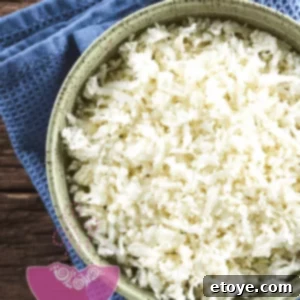
Prep Time: 5 mins
Cook Time: 10 mins
Course: Side Dish
Cuisine: American
Servings: 4
Calories: 61 kcal
Ingredients
- 1 large head cauliflower
- Salt to taste
- Cooking oil, as needed (optional)
Instructions
- Rinse and pat dry the head of cauliflower. Strip away its green outer leaves.
- Cut cauliflower into sections. For a food processor or high-speed blender, use individual florets. For a box grater or hand chopping, use larger chunks. If chopping by hand, remove most of the stem.
- Dice cauliflower sections using your method of choice (food processor, box grater, or knife) to create even-sized rice-like granules.
To cook cauliflower rice in the microwave:
- Place 1 serving of cauliflower rice in a bowl and cover with plastic wrap or a plate. Microwave on High until heated through, about 3 minutes.
On the stovetop:
- Stir-fry cauli-rice over medium-high heat, with oil and salt if desired, until tender-crisp, about 5-8 minutes.
In the oven:
- Preheat oven to 400 degrees F (200 degrees C).
- Toss cauliflower rice with olive oil and salt and spread it into a single layer on a baking sheet. Roast until “rice” is dry, stirring halfway, about 10-18 minutes.
Notes
Freeze raw cauliflower rice for up to 3 months in a resealable zip-top bag. To defrost, microwave on low in a heat-proof bowl until slightly softened, then blot dry before cooking.
Nutrition
Calories: 61kcal, Carbohydrates: 10g, Protein: 4g, Fat: 2g, Saturated Fat: 1g, Sodium: 73mg, Potassium: 628mg, Fiber: 4g, Sugar: 4g, Vitamin C: 101mg, Calcium: 46mg, Iron: 1mg
Keyword: rice
Tried this recipe? Let us know how it was!
